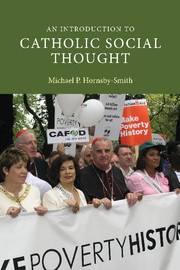Book contents
- Frontmatter
- Contents
- List of tables and figure
- Acknowledgements
- Dedication
- List of abbreviations and acronyms
- PART I SOCIAL REALITY AND SOCIAL ANALYSIS
- PART II THEOLOGICAL RESOURCES
- PART III JUSTICE ISSUES
- 6 Human rights
- 7 The family
- 8 Economic life
- 9 Social exclusion
- 10 Authentic development
- 11 War and peace
- PART IV ACTION RESPONSES
- Appendix: Selected campaigning organizations
- References
- Index
8 - Economic life
Published online by Cambridge University Press: 14 January 2010
- Frontmatter
- Contents
- List of tables and figure
- Acknowledgements
- Dedication
- List of abbreviations and acronyms
- PART I SOCIAL REALITY AND SOCIAL ANALYSIS
- PART II THEOLOGICAL RESOURCES
- PART III JUSTICE ISSUES
- 6 Human rights
- 7 The family
- 8 Economic life
- 9 Social exclusion
- 10 Authentic development
- 11 War and peace
- PART IV ACTION RESPONSES
- Appendix: Selected campaigning organizations
- References
- Index
Summary
THE SALIENCE OF ECONOMIC ISSUES
In the modern world economic life has become more and more complex. Although great strides have been taken in recent decades in the understanding of the workings of markets and their regulation to ensure that major economic collapses do not occur and that rough equilibrium between supply and demand is maintained, large scale unemployment, usually concentrated among specific subgroups of the population, is still a problem which occurs periodically. This raises such issues as the right to work, in the sense of paid employment, and appropriate social provision for the unemployed.
Some would argue that the capitalist economic system, which is the dominant economic system throughout the world today, is intrinsically unjust and that it treats labour as simply a factor of production to be used or discarded according to the dictates of the market. The power of decision-making is highly asymmetric and reflects the gross inequalities of income and wealth which are to be found both within our own societies and also between developed and developing nations. In Britain, a large majority of the population ‘own’ their own homes but the ownership of equities is much more skewed and wealth and income disparities have increased significantly in recent years. In our complex world, what does the right to private property mean and what might be its limits?
- Type
- Chapter
- Information
- An Introduction to Catholic Social Thought , pp. 177 - 207Publisher: Cambridge University PressPrint publication year: 2006

